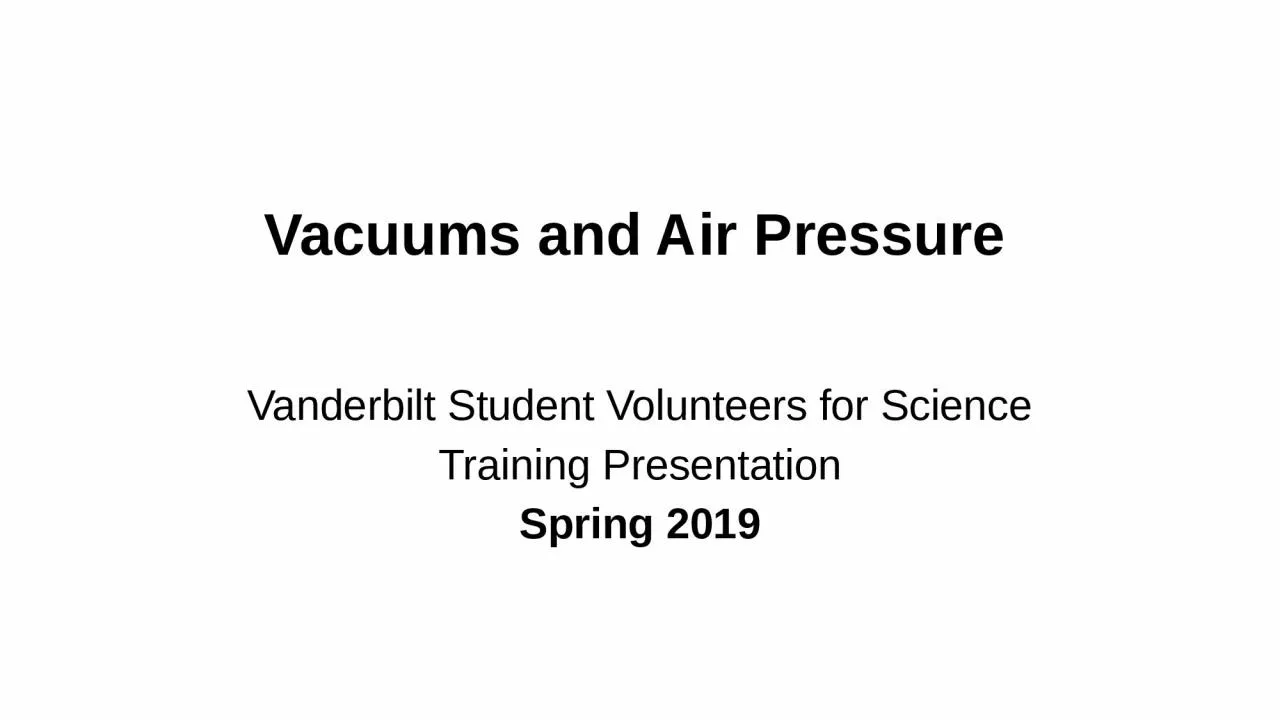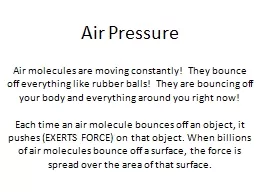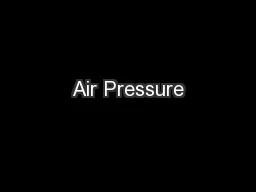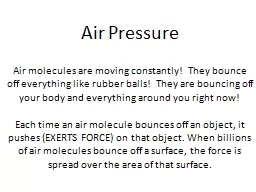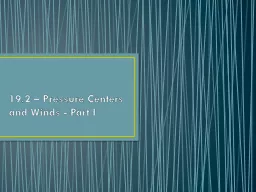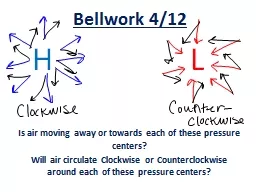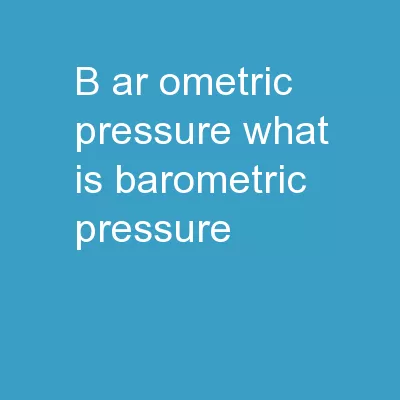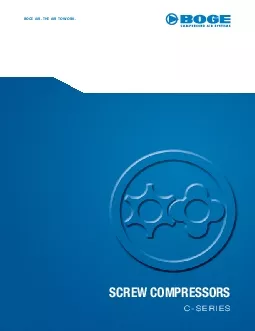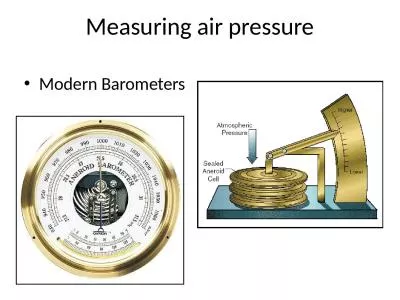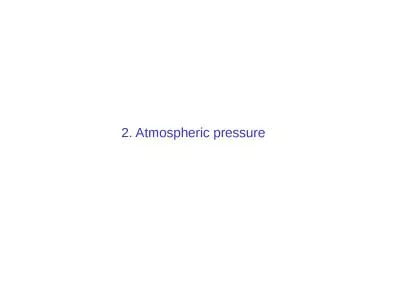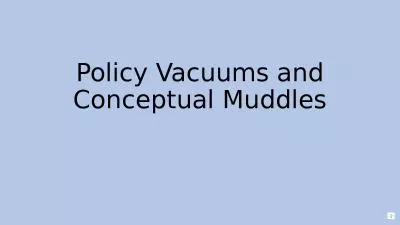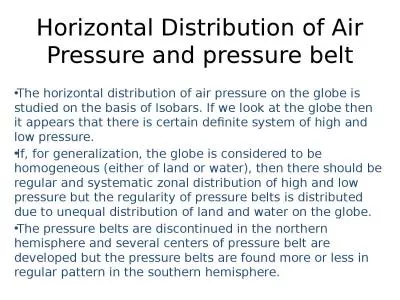PPT-Vacuums and Air Pressure
Author : adia | Published Date : 2022-06-15
Vanderbilt Student Volunteers for Science Training Presentation Spring 2019 IA What is the Atmosphere Write the following terms on the board atmosphere air pressure
Presentation Embed Code
Download Presentation
Download Presentation The PPT/PDF document "Vacuums and Air Pressure" is the property of its rightful owner. Permission is granted to download and print the materials on this website for personal, non-commercial use only, and to display it on your personal computer provided you do not modify the materials and that you retain all copyright notices contained in the materials. By downloading content from our website, you accept the terms of this agreement.
Vacuums and Air Pressure: Transcript
Vanderbilt Student Volunteers for Science Training Presentation Spring 2019 IA What is the Atmosphere Write the following terms on the board atmosphere air pressure vacuum EVERYONE MUST WEAR GOGGLES. The PV18 Lawn Vacuum Catcher holds 14 1/2 bushels. The collection system offers efficient material reduction and high capacity. The wedge shape of the PV 18 only adds 20 inches of length to most mowers. The dump lever is easy to pull and gives a secure and positive spring-like feel when the door is latched and locked into place. The improved tubular frame offers increased strength for demanding conditions.
Available in three different sizes the Colt vacuums allow you to match the machine with your requirements Colt Series HeavyDuty CordElectric WetDry Vacuums NSS Enterprises Inc 3115 Frenchmens Road Toledo Ohio 436072958 USA wwwnsscom Printed on Green Air molecules are moving constantly! They bounce off everything like rubber balls! They are bouncing off your body and everything around you right now!. Each time an air molecule bounces off an object, it pushes (EXERTS FORCE) on that object. When billions of air molecules bounce off a surface, the force is spread over the area of that surface.. Air molecules are moving constantly! They bounce off everything like rubber balls! They are bouncing off your body and everything around you right now!. Each time an air molecule bounces off an object, it pushes (EXERTS FORCE) on that object. When billions of air molecules bounce off a surface, the force is spread over the area of that surface.. Air molecules are moving constantly! They bounce off everything like rubber balls! They are bouncing off your body and everything around you right now!. Each time an air molecule bounces off an object, it pushes (EXERTS FORCE) on that object. When billions of air molecules bounce off a surface, the force is spread over the area of that surface.. What air pressure systems are anticyclones associated with?. . What . air pressure systems are cyclones associated with?. Do Now. What air pressure systems are anticyclones associated with? . Highs. Will air circulate Clockwise or Counterclockwise around each of these pressure centers?. H. L. Cyclonic and anticyclonic winds in the Northern Hemisphere. Cyclones and anticyclones . Cyclone. A center of . 1. Barometric Pressure. Use your Air Pressure Guide Notes with these slides.. i. The air is made up of molecules.. 2. .. Air molecules are all around us. 3. Like all matter, air molecules have mass.. SCREW COMPRESSORSC-SERIESbeen synonymous with ef cient and reliable compressed air The BOGE C-series is a trendsetter in its class less noise less pipework less connections in contrast to more output Earth’s gravitational force. Atmospheric Pressure. As the atmosphere is held down by gravity, it exerts a force upon every surface (pressure = force per unit area). At sea level the force is the weight of 1 kg of air that lies above each square centimeter of the surface (around 15 lbs per in. EARTH SURFACE. gravity. random. motion. Weight of all air molecules is propagated to surface by random motion of molecules. Random motion of molecules causes pressure to be applied in all directions. Policy Vacuums and Conceptual Muddles. A new technology appears.. A . muddle. : What sort of thing is it?. A . policy vacuum. : How should it be used, regulated, sold or whatever?. Common Carriers. The horizontal distribution of air pressure on the globe is studied on the basis of Isobars. If we look at the globe then it appears that there is certain definite system of high and low pressure.. If, for generalization, the globe is considered to be homogeneous (either of land or water), then there should be regular and systematic zonal distribution of high and low pressure but the regularity of pressure belts is distributed due to unequal distribution of land and water on the globe. . Air Conditioning Repairs Central Coast is your go-to source for swift and reliable solutions to keep your cooling systems running smoothly. Specializing in troubleshooting and repairing a variety of air conditioning units, their team of skilled technicians ensures prompt and efficient service.
Link here: https://walkerairconditioning.com.au/
Download Document
Here is the link to download the presentation.
"Vacuums and Air Pressure"The content belongs to its owner. You may download and print it for personal use, without modification, and keep all copyright notices. By downloading, you agree to these terms.
Related Documents

